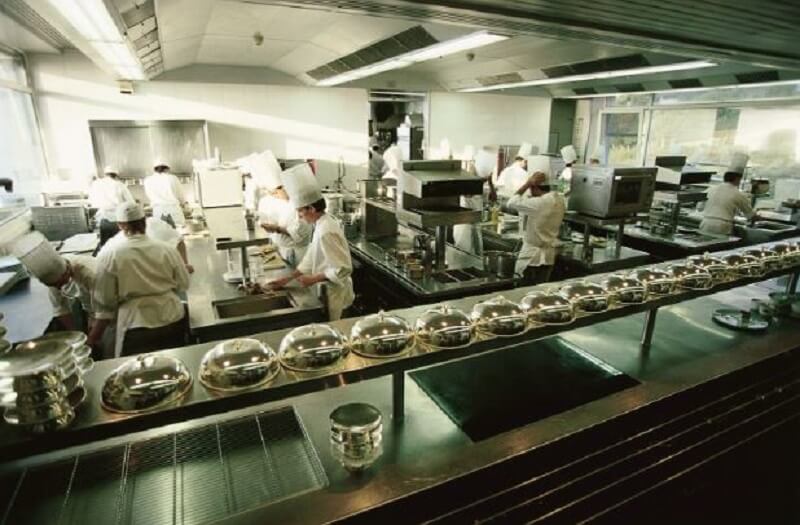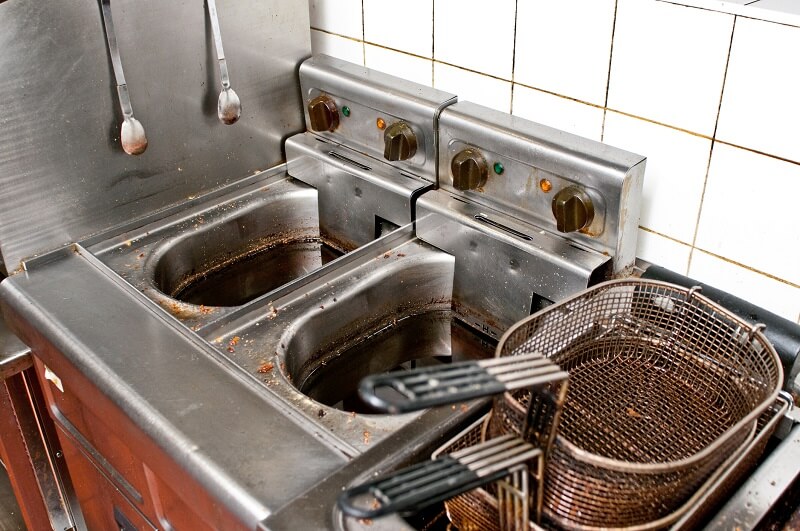Let’s face it: Commercial kitchens are hubs for grease and food waste. With busy staff keeping up with orders, it becomes difficult to prioritize daily cleaning. Over time, neglecting kitchen cleanliness can lead to equipment breakdowns and grease trap problems.
Most kitchens wait until it’s too late to consider commercial grease trap cleaning, which leads to financial loss and legal non-compliance. That’s why we encourage a more active approach to keeping kitchens clean and safe. Let’s discuss why this pays off and how your business can benefit from routine commercial grease trap cleaning with the following innovative cleaning techniques.
Depending on the type of food you serve and your equipment, one or more of these grease trap cleaning techniques could help you avoid kitchen shut-downs and serve your customers without a hitch!
Why Traditional Grease Trap Cleaning Falls Short
One of the main reasons traditional grease trap cleaning is inefficient is that it often leaves behind oily residue that leads to clogs and plumbing issues. Plumbing and scraping only remove loose grease that mainly hardens and generates unpleasant odors and unsanitary working conditions. Relying on these outdated methods will increase your risk of frequent kitchen shut-downs, jeopardizing your business.
That’s exactly where advanced commercial grease trap cleaning solutions come in! These techniques are more thorough, sanitary, and effective for keeping your kitchen free from clogs and flooding, and are an initial investment that pays off long-term.
Enzyme treatments, hydro jetting, and other innovative cleaning solutions break up grease before it accumulates and causes issues, extending maintenance intervals and helping you meet all compliance checks.
5 Innovative Grease Trap Cleaning Techniques
If you’re new to commercial grease trap cleaning, simply know that it ensures that your grease trap works efficiently and doesn’t cause kitchen accidents and revenue loss. As industrial cleaners, we’ve seen what backed-up grease traps can do to commercial kitchens and advise them to maintain a frequent cleaning schedule that includes one of the following cleaning techniques.
So, let’s see which commercial grease trap cleaning technique is the best for you!
1. Enzyme-Based Grease Digestion
Enzyme-based grease digestion uses an enzyme formulation to break down hard-to-remove fats, oils, and grease residue into smaller water-soluble molecules easily washed off.
This cleaning technique is ideal for businesses looking for a sustainable solution that is relatively hands-off and prevents buildup. Using enzyme treatments works best as a consistent solution and not a once-in-a-while fix. This technique does not yield instant results and should not be used for emergencies. Instead, it requires regular use to be effective.
2. High-Pressure Hydro Jetting
High-pressure hydro jetting is one of the most effective ways to dislodge oil and food particles from the pipes. This method uses high-pressure water to cut through hardened oil and grease that is hard to manage with traditional plumbing.
Hydro jetting helps restore drainage effectively and with minimal down-time, which is an excellent solution for commercial kitchens that have high volumes of customers and experience frequent backups.
3. Automated Grease Trap Monitoring Systems
Smart grease trap monitoring systems help kitchens stay informed about their grease levels in real time by alerting staff to potential issues. These systems work well alongside regular maintenance cleaning, providing businesses with double protection regarding safety and compliance. With busy kitchens, this system complements hydro jetting very well!
4. Bacteria-Based Bioremediation
Similar to enzymatic treatments, bioremediation grease trap cleaning utilizes grease-eating bacteria to break down food, oil, and grease. It is the optimal choice for kitchens that want to stay eco-friendly without using harsh chemicals.
These bacteria treatments are safe and won’t corrode plumbing and wastewater systems. The only drawback of this method of grease trap cleaning is that it takes time. Unlike more immediate methods like hydro jetting, bioremediation requires multiple applications and time to break down grease.
5. Vacuum-Assisted Grease Trap Pumping
Vacuum pumping uses powerful suction equipment to break away blockages and remove grease with minimal disruption to kitchen operations.
Unlike traditional plumbing, vacuum grease trap pumping doesn’t leave behind residue and is more effective at removing residue that can linger in the kitchen and spread to the dining areas. Overall, vacuum grease trap cleaning is one of the best solutions for grease trap emergencies.
Key Benefits of Implementing Grease Trap Cleaning Techniques

1. Reduced Maintenance Costs and Longer Grease Trap Lifespan
Utilizing these innovative grease trap cleaning techniques can significantly reduce the need for repairs, equipment replacement, and emergency clean-ups.
While plumbing benefits standard pipe clogs, grease traps require more thorough cleaning and maintenance to keep commercial kitchens operating efficiently. Only professional grease trap cleaning services can remove residue properly so that it doesn’t build up over time, leading to emergency repairs, unpleasant odors, and unwanted critters.
When you invest in more effective solutions upfront, your business can cut down on expensive service calls, and you can maintain proper grease trap function for years to come.
2. Minimized Downtime and Fewer Emergency Cleanings
The best part about many of these techniques, especially automated grease monitoring, hydro jetting, and vacuuming, is that they require minimal operational downtime, which will help you prevent any revenue losses associated with temporary kitchen closures.
Frequent closures for busy restaurants and commercial kitchens that rely on a steady customer base would impact both business revenue and brand reputation (who wants bad reviews?). That’s why regular maintenance using one of these commercial grease trap cleaning techniques can help you prevent unexpected emergencies that your staff and customers would dread.
3. Improved Regulatory Compliance and Eco-Friendly Waste Management
Grease trap usage and cleaning are heavily regulated in the U.S., with strict guidelines meant to prevent sewer system damage and environmental contamination. All commercial kitchens that use grease traps should understand and abide by these laws.
Failing to meet federal and state compliance can lead to vast fines and even business closure.
When it comes to sustainability, the most eco-friendly solutions we’ve listed—bacteria-based bioremediation and enzymatic treatments—help to break down grease naturally, which is the perfect solution to reduce the toxicity of wastewater discharge. By investing in these methods, businesses can meet compliance and their pledge toward environmental stewardship.
Our Verdict?
So, which method should you use? It truly depends on your grease volume and budget. For small cafes and restaurants, we recommend bacterial bioremediation and enzymatic treatments, while for high-volume kitchens, we advise businesses to choose vacuum grease trap pumping or hydro jetting.
Likewise, we recommend scheduling maintenance cleaning services according to your needs and budget for small kitchens looking to maintain their operational integrity and kitchen compliance. Similarly, we advise owners to invest in automated grease trap monitoring systems alongside more frequent regular maintenance protocols for large kitchens.Scheduling maintenance grease trap cleanings is quite simple. All you have to do is get in touch with a commercial grease trap cleaning service that understands your unique kitchen needs and can recommend the right cleaning method for your business. Then, set up dates when you’d like the cleaning to take place and simply relax with peace of mind that your business is much better off because of your proactive actions!






